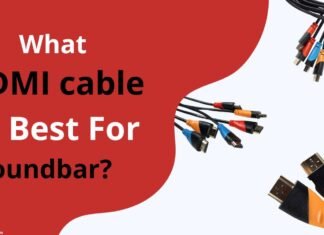The hardness level of the protector is a critical factor that determines the safety and longevity of your device’s display.
In this comprehensive analysis article, we want to explain to you the difference between 6H, 9H, 9D, and 11D tempered glass protectors.
Battle of the Glass Protectors: 6H vs. 9H vs. 9D vs. 11D – Which One Is Right for You?

For Basic Protection
6H Tempered Glass
Starting with 6H tempered glass, you enter the realm of basic protection against everyday scratches and minor abrasions. While it offers a foundational layer of defence, its limited hardness means it might not withstand heavier impacts or sharp objects.
Touch sensitivity remains uncompromised, and its installation is straightforward, making it a budget-friendly choice for those seeking fundamental protection.
For Enhanced Protection
9H Tempered Glass
Moving up the hardness scale, we encounter the widely known 9H tempered glass. This protector brings enhanced scratch resistance and moderate impact absorption, providing a reliable barrier against common threats.
It maintains touch sensitivity and retains optical clarity, making it a popular choice among Android users. The option of flat or 2.5D edges ensures compatibility with a wide variety of cases.
Premium Safeguarding
9D Tempered Glass
Stepping into the territory of 9D tempered glass, we delve into a realm of premium protection. Alongside the benefits of 9H, 9D offers advanced impact absorption and superior scratch defence.
The inclusion of curved or 3D edges not only enhances aesthetics but may require specialized cases for a proper fit. Professional installation is often recommended due to its complex edge design and advanced features.
The Epitome of Security
11D Tempered Glass
At the top of the hardness spectrum is the formidable 11D tempered glass. Engineered for ultimate protection, it offers superior scratch and impact resistance, making it an ideal choice for those who prioritize device safety above all else.
Its advanced shatterproof capabilities and compatibility with curved or 3D edges elevate its status as a robust defender against drops and impacts. Professional installation is recommended for optimal results.
How to Choose the Best One?
You may be confused between those above but it’s not too hard to select the best from the above. The decision between 6H, 9H, 9D, and 11D tempered glass protectors boils down to your priorities.
Are you seeking fundamental defence, enhanced resilience, premium safeguarding, or the epitome of security?
With this comprehensive comparison, you’re equipped to make the informed choice that aligns perfectly with your Android device and your quest for unrivalled safety.
Compared with each other for better understanding:
Here’s a comparison table summarizing the key differences between 6H, 9H, 9D, and 11D tempered glass protectors:
| Features | 6H Tempered Glass | 9H Tempered Glass | 9D Tempered Glass | 11D Tempered Glass |
|---|---|---|---|---|
| Scratch Protection | Basic resistance to everyday scratches and abrasions | Enhanced protection against scratches and impacts | Premium scratch defense | Superior scratch and impact resistance |
| Impact Absorption | Limited impact absorption | Moderate impact absorption | Advanced impact absorption | Exceptional resistance to drops and impacts |
| Touch Sensitivity | Maintains touch sensitivity | Retains touch sensitivity | Maintains touch responsiveness | Retains smooth and seamless touch interaction |
| Durability | Average durability | Enhanced durability | Prolonged lifespan of the protector | Extended lifespan due to reinforced strength |
| Clarity and Transparency | Retains screen clarity | Maintains optical clarity | High optical clarity | Crystal-clear view with minimal distortion |
| Ease of Installation | Easy installation process | Straightforward installation | Professional installation recommended | Professional installation recommended |
| Edge Design | Mostly flat or 2.5D edges | Flat or 2.5D edges | Curved or 3D edges | Curved or 3D edges for enhanced aesthetics |
| Resilience to Shattering | Limited resilience to shattering | Enhanced resistance to shattering | Advanced shatterproof capabilities | Superior shatterproof features for robustness |
| Compatibility with Cases | Generally compatible with cases | Compatible with a variety of cases | Might require specialized cases for proper fit | Might require specialized cases for proper fit |
| Pricing and Accessibility | Budget-friendly option | Widely available and popular | Often comes at a higher cost | Higher cost due to advanced features and strength |
| Installation Expertise | Suitable for users with varying levels of DIY skills | Easy to install with basic DIY skills | Professional installation recommended | Professional installation recommended |
Conclusion:
In the ever-evolving landscape of smartphone protection, your choice of tempered glass protector is a statement of your priorities.
From basic defence to ultimate security, each type has its merits and nuances. Armed with this thorough analysis, you’re well-prepared to select the protector that best aligns with your Android device’s needs, ensuring both its aesthetics and safety are seamlessly preserved.











